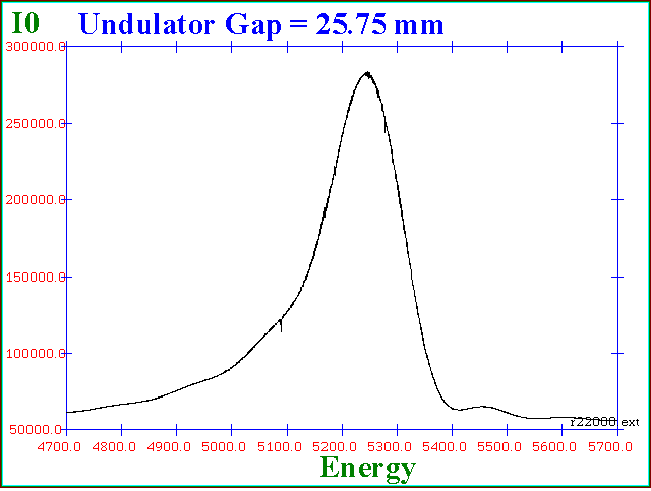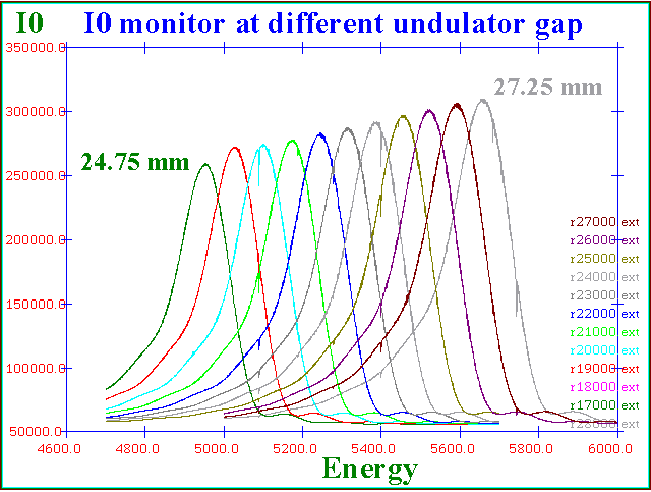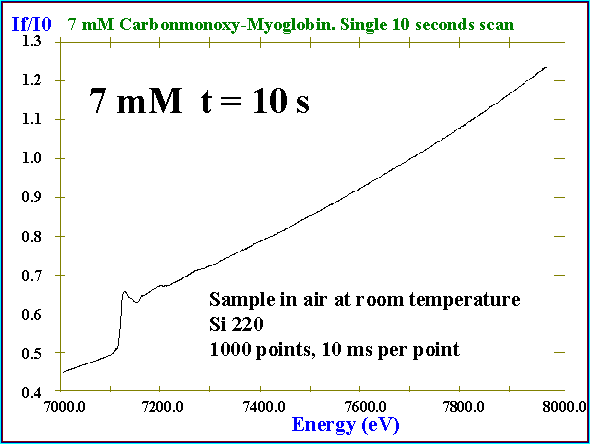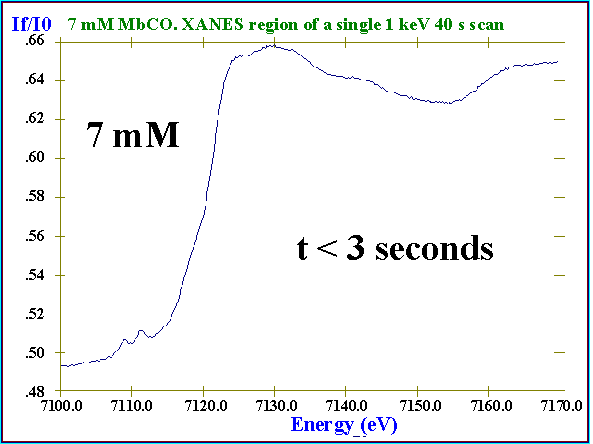ID26 Scanning Modes
What does gap scan mean?
The beamline ID 26 is an undulator-based beamline. These insertion devices present a very bright x-ray emission centered at an energy that is function of its opening. The figure shows the emission spectrum of one of our undulators as measured by one I0 monitor.

As it can be appreciated, if the flux is to be maximized all over an EXAFS spectrum, the undulator gap has to change as the energy is scanned. The figure below illustrates what we call a gap scan.

What does quick scan mean?
At ID26 two different scanning modes are available. One consists on discrete movements of the undulator gap with a minimum step width specified by the gscan_setup macro. This procedure is straightforward and allows the adjustment of several undulators in a way totally transparent to the user. However, the procedure for changing gap is relatively time consuming and suffers from an accumulation of settling times.

In order to minimize this 'lost' time and the sample exposure to the radiation, we can perform quick scans consisting on a synchronous movement of the undulator gap and the Bragg angle of the monochromator. This method minimizes radiation exposure as well as allows us to perform slow time-resolved experiments. The main disadvantage respect to the slower gap scan is that we cannot chop the beam and that our acquisition system is not ready (yet!) to use it with energy resolved detectors.

The previous figures give an idea of what can be achieved with this method. Of course, as the concentration lowers, more scans are necessary in order to obtain enough statistics.



